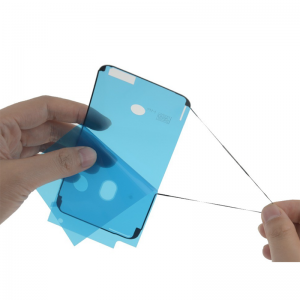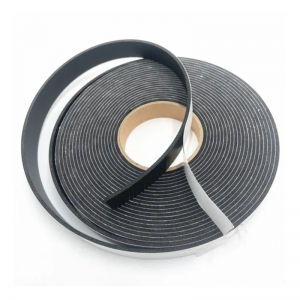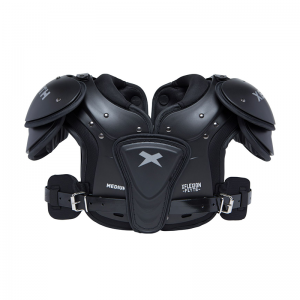What is IXPE/PP
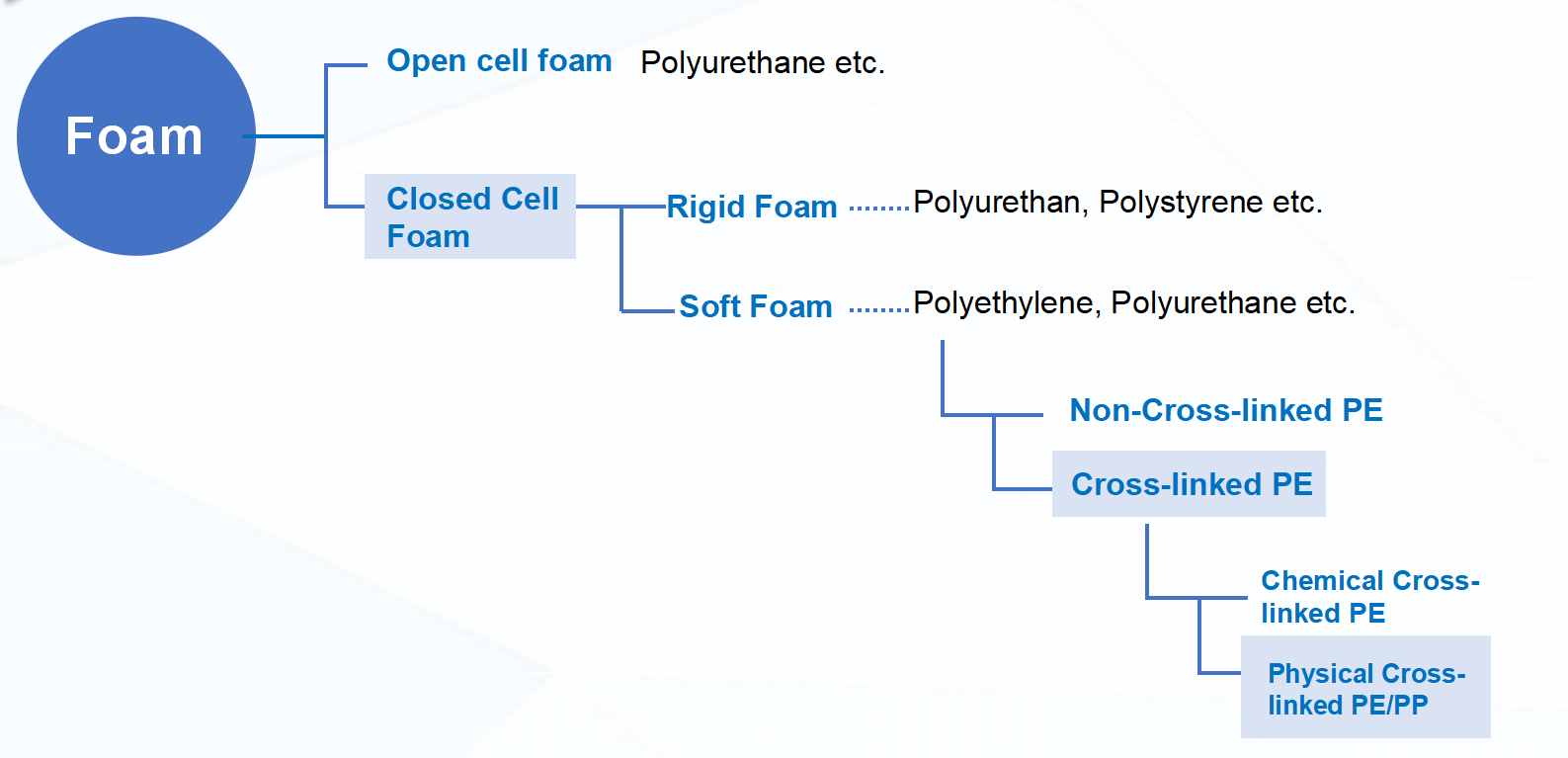
Foam
Foam is a type of plastic product in which air bubbles are dispersed to make it porous. A foam contains a lot of air and thus is lightweight and excellent for cushioning and thermal insulation.
Closed-cell Foam
Inside this kind of foam, the inner bubbles are independent, not connected to each other (open-cell). Closed cells do not easily release air. Thus, they are bouncy, quickly recover their original shape when pressed, and resist water.
Cross-linked PE
A reaction that combines polyethylene molecular chains. Crosslinking the molecular structure improves strength, heat resistance, chemical resistance, etc. The method is called crosslinking because the long molecular chains resemble bridges.
Physical Cross-linked PE/PP
Electron beams break molecular bonds and generate active spots of a polymer. Irradiation crosslinking is a technique to bond these active spots to each other. Compared to chemically cross-linked products, irradiation cross-linked products are more stable and evenly cross-linked. The advantages include a soft and smooth surface and good for color development.
Manufacturing Process
Extrusion
Raw materials (PE/PP) are mixed with a blowing agent and other materials and extruded into sheets.
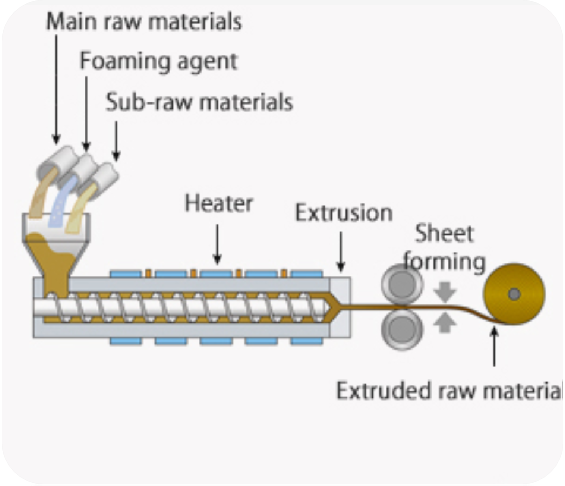
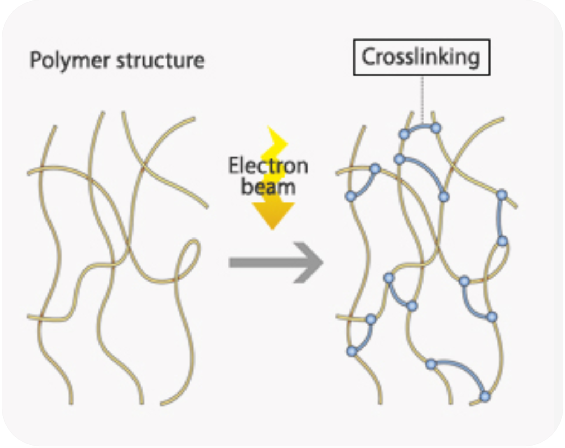
Irradiation
Emitting electron beams on polymers to create molecular level bonds.
Foaming
Sheets are foamed by heating, creating a foam with a volume of up to 40 times.
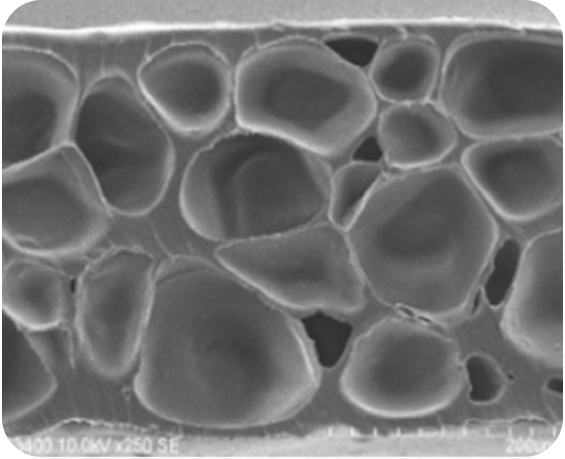
Water Resistance/Absorption Strength
Water Resistance/Absorption
Polyolefin resin-based closed-cell foam has low water absorption
Since polyolefin is lipophilic resin, it is a low-hygroscopicity material. The cells in IXPE/PP are not connected, which does not allow entry of water, exhibiting excellent water resistance.
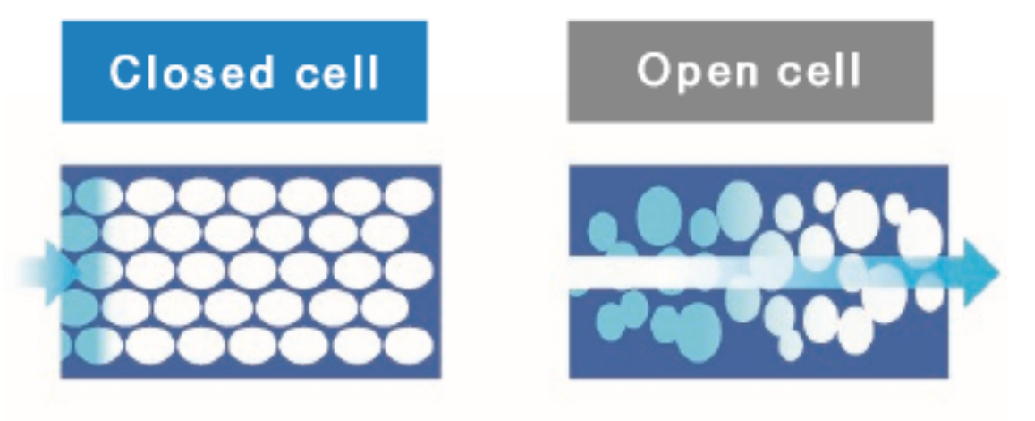
Strength
Sturdier yet flexible, with superior heat resistance when compared to non-crosslinked foams
Crosslinking the molecular structure of polymer with bonds like entangled strings further tightens the molecular bonds, which results in a molecular lattice mesh structure, improving heat resistance and strength.
| Crosslinked | Non-crosslinked | |
| Expansion Rate | 30 Times | |
| Thickness | 2 mm | |
| Tensile Strength (N/cm2) *2 | 43 | 55~61 |
| Elongation (%)*2 | 204 | 69~80 |
| Tear Strength (N/cm2)*2 | 23 | 15~19 |
| Max Operaing Tem*3 | 80℃ | 70℃ |
Thermal Conductivity Thermal Insulation Heat Resistance
Thermal Conductivity
Optimally arranged thermal conductive filler achieves high thermal conductivity
We control the orientation of anisotropic thermal conductive filler to form efficient heat release paths, achieving high thermal conductivity and softness. In addition, our material compositions are composed of only electrical insulating materials and siloxane-free resins, reducing the risk of defecting electronic components to an extremely low level.

Thermal Insulation
Foam containing a large amount of air with minimized convection resulting in low thermal conductivity and superior thermal insulation performance
Closed cells in foam limit the amount of air convection, conducting little heat, which provides excellent thermal insulation. Different from glass wool and rigid foam, foam is much more flexible and easier to install. Therefore, it is suitable for insulators for filling very small spaces in houses and various machinery.
Heat Resistance
With excellent heat resistance, polypropylene resin has minimal thermal shrinkage even in the high temperature range
The rate represents how much the foam changes in size at different temperatures when heated without external force applied. While polyethylene foam deforms when heated to 80°C or higher, polypropylene foam has excellent heat resistance with a shrinkage rate of 3% or less even at 140°C.

Sealing Ability Smoothness Flexibility
Sealing Ability
With its flexibility, the foam seals uneven or sharp surfaces
The sealing property of a sealer such as tapes is greatly affected not only by the properties of the material substance but also by its close physical contact with the uneven surface of the adherend. A material with high flexibility eliminates gaps with the adherend and realizes high sealing performance.
Compare with other materials on sealing property
The foam seals uneven surfaces and fill gaps inside the housing
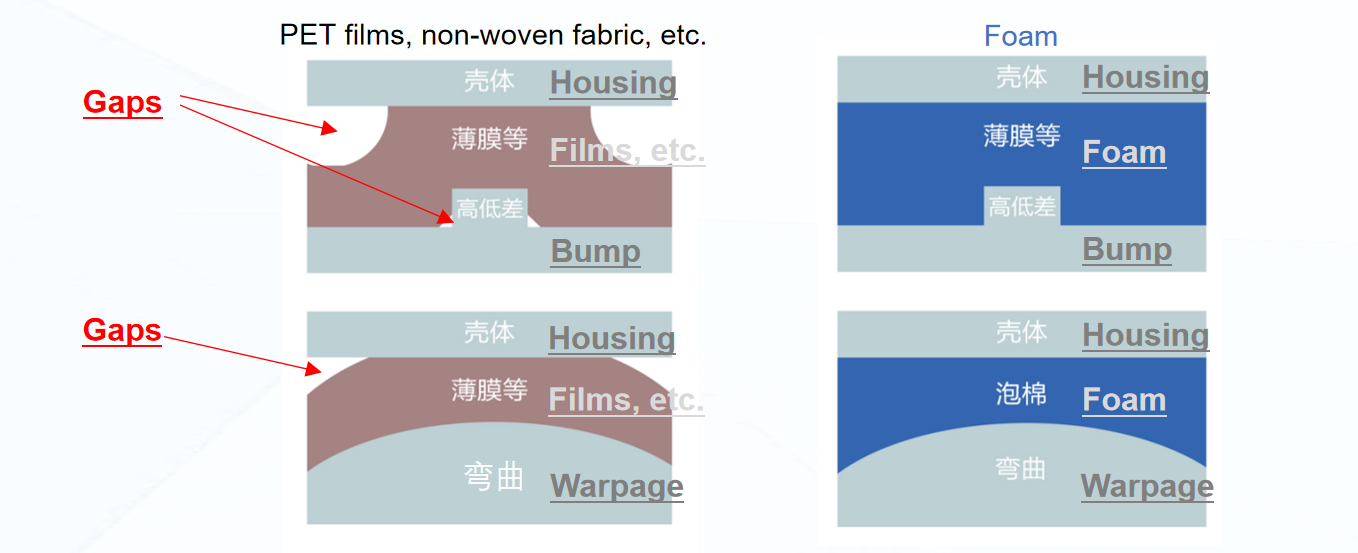
Smoothness
An evener and cleaner surface compared to chemical crosslinked foam, suitable for adhesion and coating
Electron beam crosslinking accelerates electrons with a high voltage and emits them onto sheets. The beam electrons evenly and stably penetrate through each sheet, resulting in more unified crosslinking than other methods. It allows even foaming that creates a smooth surface layer suitable for adhesion and coating.
Flexibility
Resin’s intrinsic softness and closed-cell structure provide reasonable elasticity and cushioning
The cell of electron-crosslinked sheets will contain inflate in the later foaming process. Cells with various expansion times create a closed-cell structure in which all cells are separated by walls. The closed-cell structure has unique cushioning and shock absorption. Having excellent shock absorption even with small thickness, IXPE/PP sheets are used as package cushioning for precision instruments.
Workability
Thermoformability
Low Environmental Load
Electrical Characteristics
Workability
Excellent shape stability realizes various processing
Using thermoplastic polyolefin resin, our foam can change the fluidity of the polymer by changing temperature. By heating and melting, it can attach other materials or deform the foam. By taking advantage of the shape stability at room temperature, it can also be cut into complicated shapes.
Main processing examples
● Slicing (thickness change)
● Lamination (heat welding)
● Die-cutting (cutting with a mold)
● Thermoforming (vacuum forming, press molding, etc.)
Thermoformability
IXPP withstands high temperatures during molding, enabling highly deep drawability
Polypropylene (PP) has a higher melting point than polyethylene (PE). With its excellent heat resistance even at high temperatures during molding, PP can achieve both excellent thermoformability and cushioning. Specifically, PP is widely used for automotive interior trim materials and fruit protection trays.
Low Environmental Load
Halogen-free, no toxic gases when burnt
Polyolefin is a type of plastic obtained by synthesizing monomers (i.e. unit molecules) with a carbon-carbon double bonds. Since it does not contain halogens such as fluorine and chlorine, it does not generate highly toxic gases when burnt.
Electrical Characteristics
A large amount of air within closed cells provides excellent dielectric strength and low permittivity
Closed-cell structure, in which air with low dielectric strength is enclosed in separated small spaces, exhibits superior dielectric strength. In addition, polyolefin, which has a relatively low permittivity compared to other general-purpose plastics, formed in a structure containing air provides even lower permittivity.





